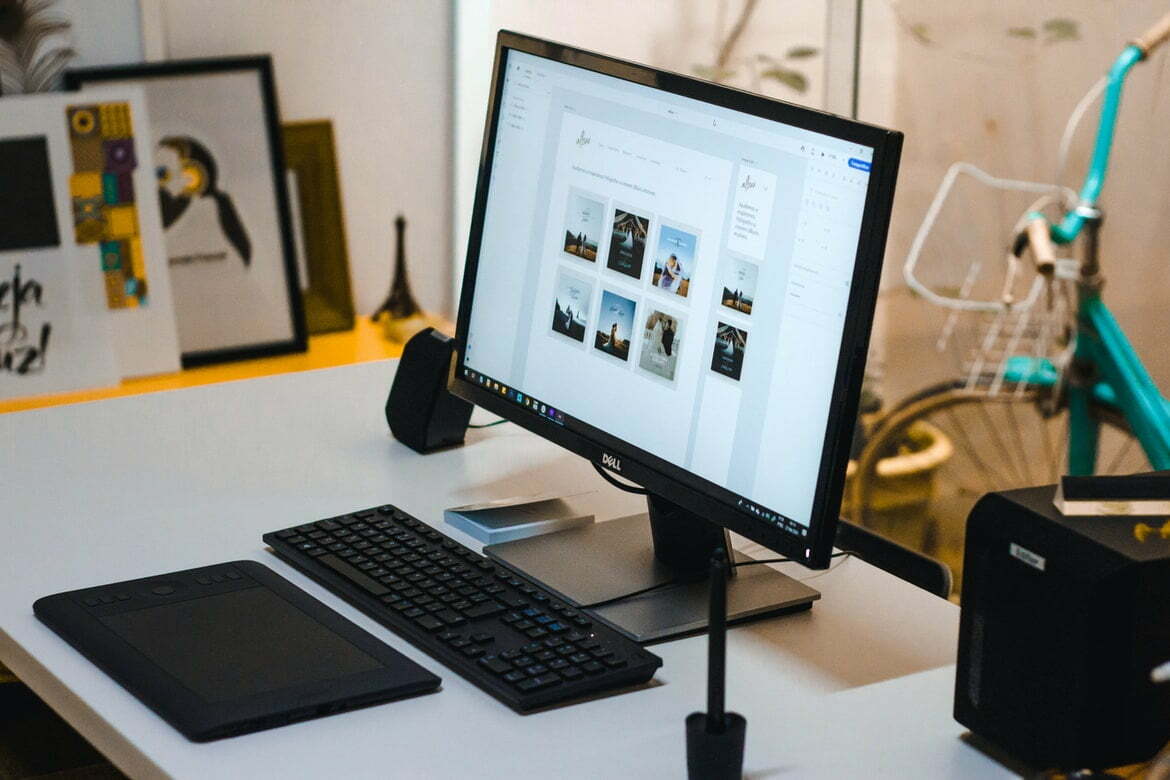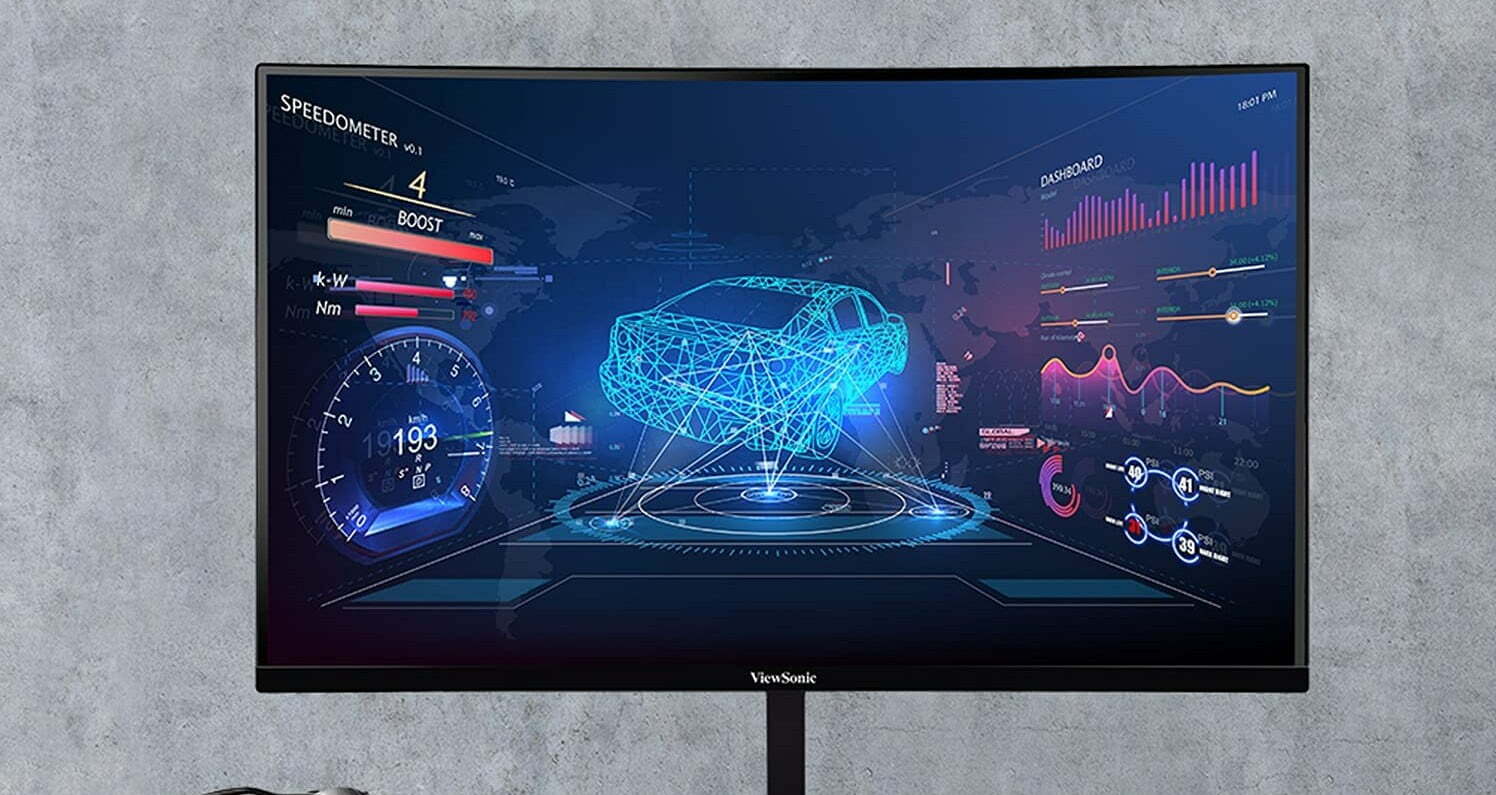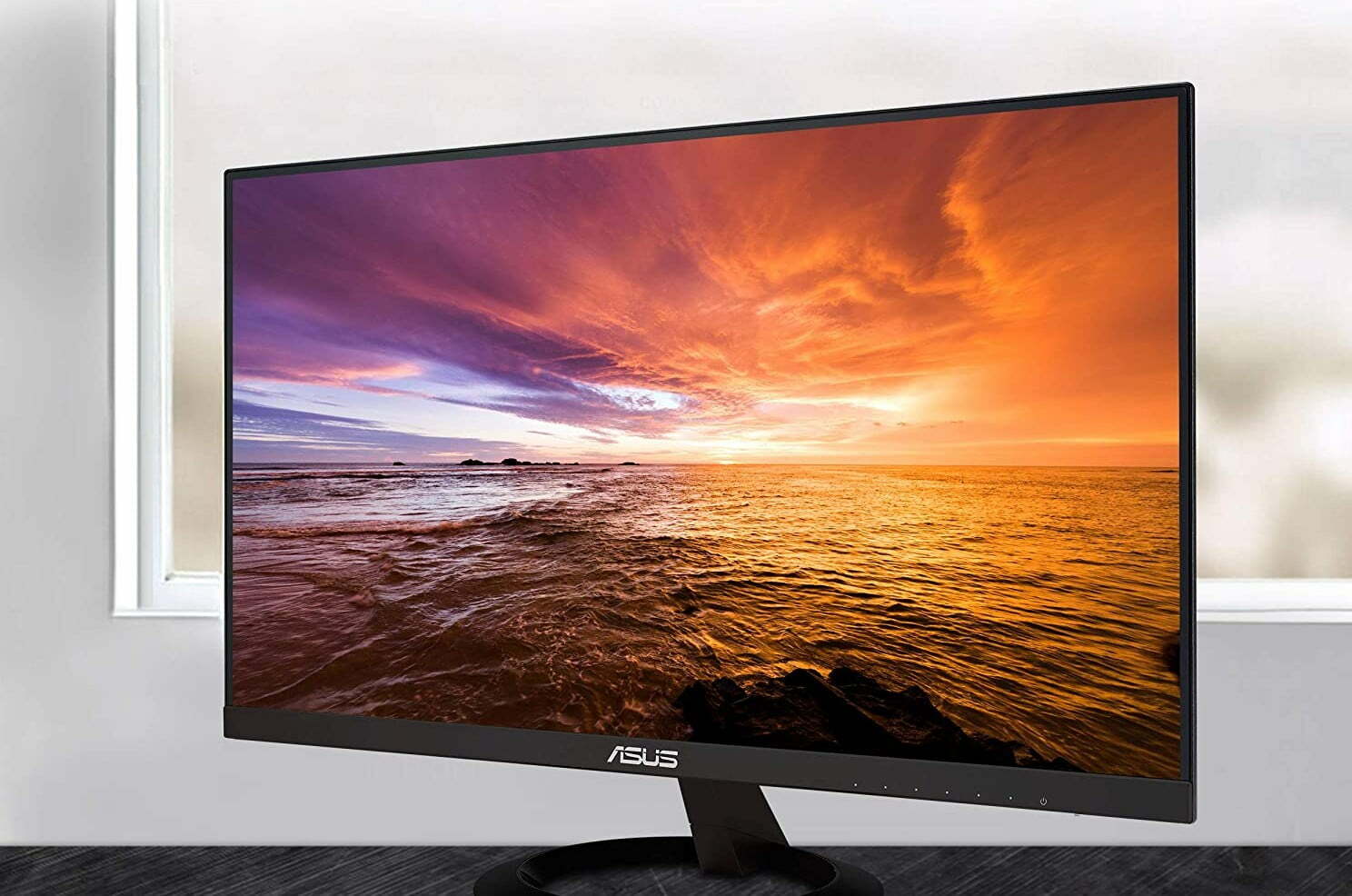If you are shopping for a new display, you may be comparing LCD vs LED monitors for eye strain. Or, you may be searching for the leading monitor for the eyes. Even the best computer monitors, after all, can cause eye fatigue with prolonged use. So which monitor type is better to avoid eye strain? Keep reading to find out.
KEY TAKEAWAYS:
- LCD monitors with a high refresh rate above 120Hz should help with eye fatigue caused by blurriness, as well as choosing a glossy vs matte monitor.
- LCD screens also tend to offer better viewing angles and a wider field of view.
- LED monitors, on the other hand, can be the better option with general eye fatigue related to prolonged use and blue light, as they tend to offer a more robust dimming system.
Differences Between LCD and LED Monitors for Eye Strain
Unfortunately, there is no easy way to declare either display type as the victor when it comes to reducing eye fatigue and eye strain, and this does include some of the top-rated curved monitors, too. This is due to the fact that eye strain and fatigue have different causes for different people. Each monitor type, however, does excel with certain scenarios, such as when you are comparing LCD vs CRT computer monitors.
Even some of the finest touch screen monitors sometimes can cause eye problems after extended use. Keep reading to learn more about monitor types, visible light, and vision syndrome.
Insider Tip
Invest in a decent pair of blue light filtration glasses to help with any eye-related issues.
Blurriness
Digital eye strain can be caused by repeated exposure to blurry images. If you are susceptible to the kind of eye fatigue brought on by blurriness and are comparing LCD versus LED monitors, go for an LCD screen with a refresh rate of 120Hz or above. This blazing-fast refresh rate will minimize blurring and, as such, any eye fatigue that accompanies it. Be sure to check which kinds of ports are available before making a monitor purchase, such as comparing monitors with DisplayPort vs HDMI, as some older connection types may not excel with high refresh rates.
Viewing Angle
LCD monitors tend to offer a wider variety of viewing angles, which can help eliminate the kind of eye fatigue related to geographical discomfort. Any monitor type can offer a perfect viewing angle, so long as it is placed correctly and you are sitting at the right distance. Even if you’re using a monitor in conjunction with another device, like the best monitor for Macbook Pro, you can get a good viewing angle from it. Still, in a pinch, LCD panels are the way to go. If you are especially concerned with viewing angles and the field of view, go with an ultrawide monitor with a 21:9 aspect ratio.
Dimming
Anyone can experience eye fatigue or eye strain when they are working long hours in front of a computer. Dimming the monitor’s light can help reduce eye strain from the monitor but at the expense of being able to see what is going on. Generally speaking, LED monitors offer more robust dimming options and various brightness settings without sacrificing visual quality. Experts suggest that eye strain can occur in as little as three hours, so if you work a full eight-hour day, this is something to consider.
F.A.Q.S
Does blue light contribute to digital eye strain?
Indeed it does. Short-wavelength blue light is one of the primary causes of eye fatigue. Be wary when using digital devices to reduce digital eye strain and keep an eye on the brightness settings.
How does blue light and screen time affect children’s health?
Keep an eye on how long your children use digital devices, as the blue light could cause eye fatigue and interrupt their natural circadian rhythm.
Is too much exposure to blue light unhealthy?
Too much exposure to blue light can cause various issues with vision, so be wary while using digital devices for long periods of time to avoid any associated vision syndrome.
STAT: There are health benefits to blue light, as it boosts alertness, helps memory and cognitive function, and elevates mood. (source)
REFERENCES:
- https://health.ucdavis.edu/health-news/newsroom/is-blue-light-from-your-cell-phone-tv-bad-for-your-health/2019/05
- https://www.asus.com/microsite/display/eye_care_technology/
- https://www.theeyepractice.com.au/optometrist-sydney/top-3-dangers-of-computer-screens-for-your-eyes-no-1-blue-light/r
- https://www.wikihow.com/Avoid-Eye-Strain-While-Working-at-a-Computer
- https://www.wikihow.com/Avoid-Eye-Strain



































![Best 27 Inch Computer Monitor in [year] 27 Best 27 Inch Computer Monitor in 2026](https://www.gadgetreview.dev/wp-content/uploads/how-to-buy-the-best-computer-monitor.jpg)
![Best BenQ Monitors in [year] 28 Best BenQ Monitors in 2026](https://www.gadgetreview.dev/wp-content/uploads/best-benq-monitor-image.jpg)
![Best ASUS Monitors in [year] 29 Best ASUS Monitors in 2026](https://www.gadgetreview.dev/wp-content/uploads/best-asus-monitor-image.jpg)
![Best Dell Monitors in [year] 30 Best Dell Monitors in 2026](https://www.gadgetreview.dev/wp-content/uploads/best-dell-monitor-image.jpg)
![Best HP Monitors in [year] 31 Best HP Monitors in 2026](https://www.gadgetreview.dev/wp-content/uploads/best-hp-monitor-image.jpg)
![Best Lenovo Monitors in [year] 32 Best Lenovo Monitors in 2026](https://www.gadgetreview.dev/wp-content/uploads/best-lenovo-monitor-image.jpg)
![Best ViewSonic Monitors in [year] 33 Best ViewSonic Monitors in 2026](https://www.gadgetreview.dev/wp-content/uploads/best-viewsonic-monitor-image.jpg)
![Best Gigabyte Monitors in [year] 34 Best Gigabyte Monitors in 2026](https://www.gadgetreview.dev/wp-content/uploads/best-gigabyte-monitor-image.jpg)
![Best Monitors for PS4 Pro Gaming in [year] 35 Best Monitors for PS4 Pro Gaming in 2026](https://www.gadgetreview.dev/wp-content/uploads/best-monitors-for-ps4-pro-image.jpg)
![Best Monitor for Xbox Series X in [year] 36 Best Monitor for Xbox Series X in 2026](https://www.gadgetreview.dev/wp-content/uploads/best-monitor-for-xbox-series-x-image.jpg)
![Best Acer Monitors in [year] 37 Best Acer Monitors in 2026](https://www.gadgetreview.dev/wp-content/uploads/best-acer-monitor-image.jpg)
![Best MSI Monitors in [year] 38 Best MSI Monitors in 2026](https://www.gadgetreview.dev/wp-content/uploads/best-msi-monitor-image.jpg)
![Best SAMSUNG Monitors in [year] 39 Best SAMSUNG Monitors in 2026](https://www.gadgetreview.dev/wp-content/uploads/best-samsung-monitor-image.jpg)
![Best LG Monitors in [year] 40 Best LG Monitors in 2026](https://www.gadgetreview.dev/wp-content/uploads/best-lg-monitor-image.jpg)
![Best AOC Monitors in [year] 41 Best AOC Monitors in 2026](https://www.gadgetreview.dev/wp-content/uploads/best-aoc-monitor-image.jpg)
![Best Philips Monitors in [year] 42 Best Philips Monitors in 2026](https://www.gadgetreview.dev/wp-content/uploads/best-philips-monitors-image.jpg)
![Best Monitors For PUBG in [year] 43 Best Monitors For PUBG in 2026](https://www.gadgetreview.dev/wp-content/uploads/best-monitor-for-pubg-image.jpg)
![Best Stream Decks in [year] 44 Best Stream Decks in 2026](https://www.gadgetreview.dev/wp-content/uploads/best-stream-deck-image.jpg)
![Best Monitors for Streaming in [year] 45 Best Monitors for Streaming in 2026](https://www.gadgetreview.dev/wp-content/uploads/best-monitor-for-streaming-image.jpg)
![Best Monitors For Flight Simulator in [year] 46 Best Monitors For Flight Simulator in 2026](https://www.gadgetreview.dev/wp-content/uploads/best-monitor-for-flight-simulator-image.jpg)




















